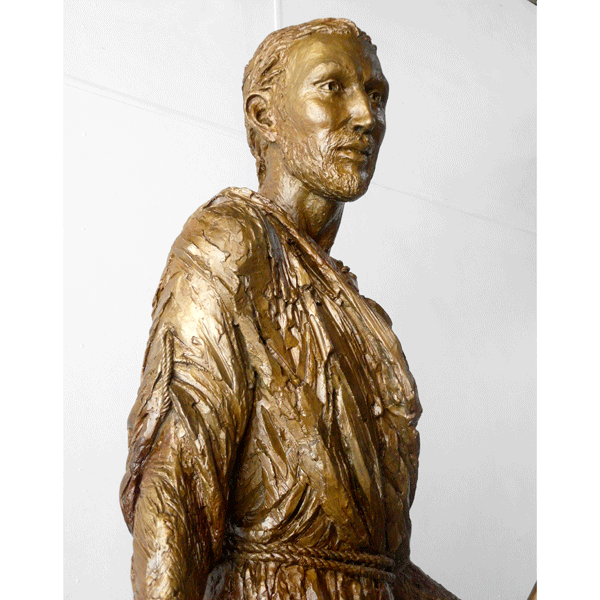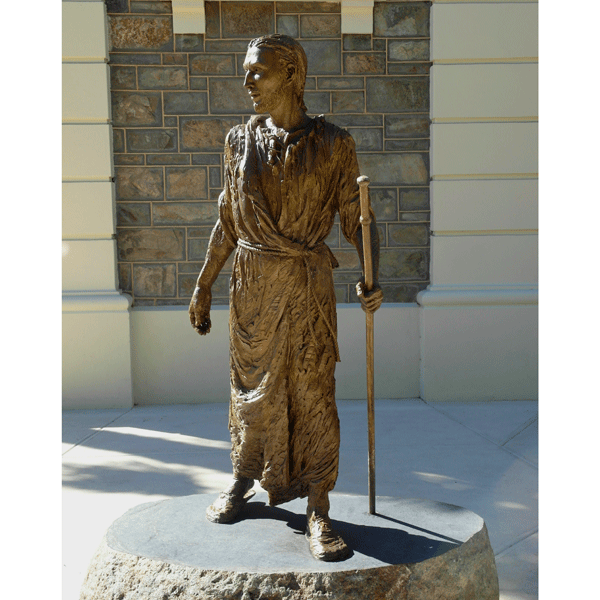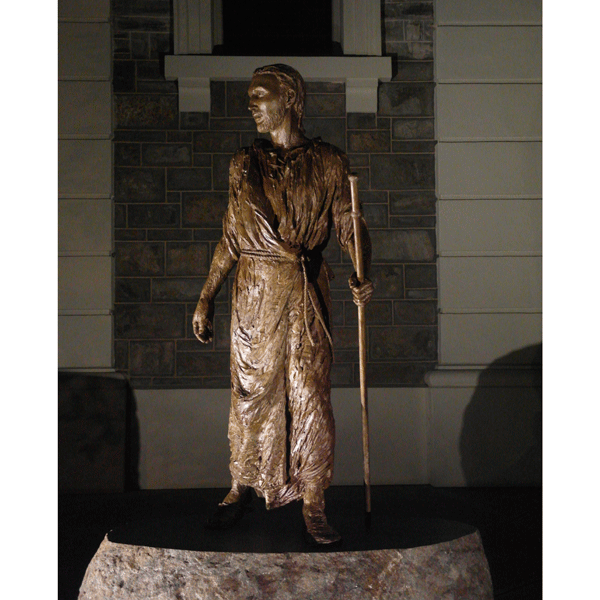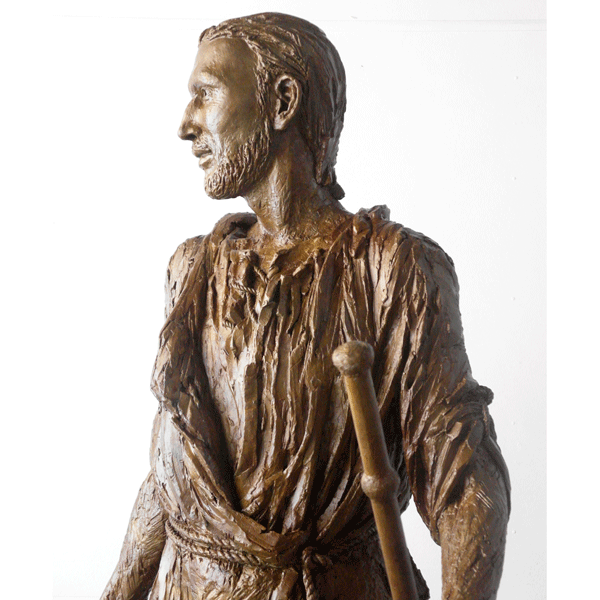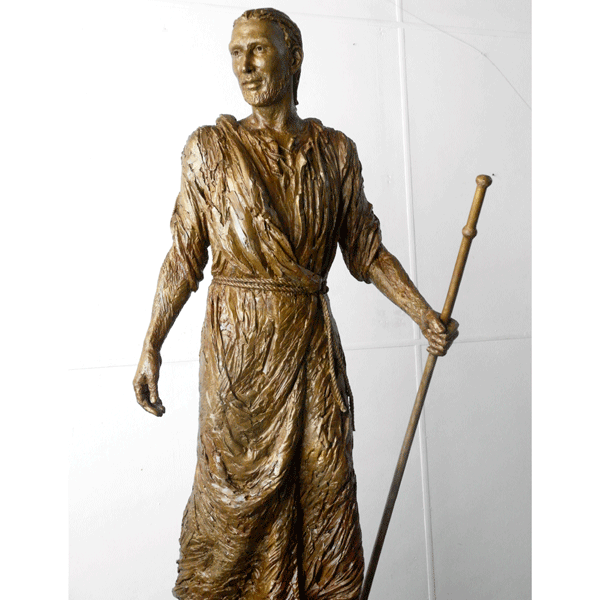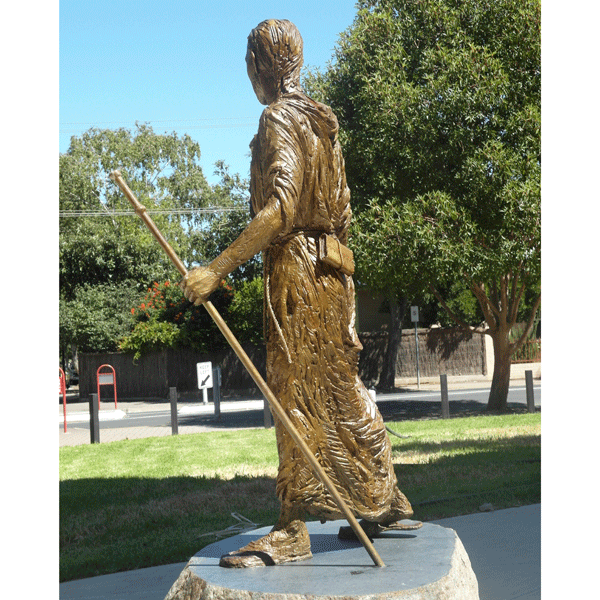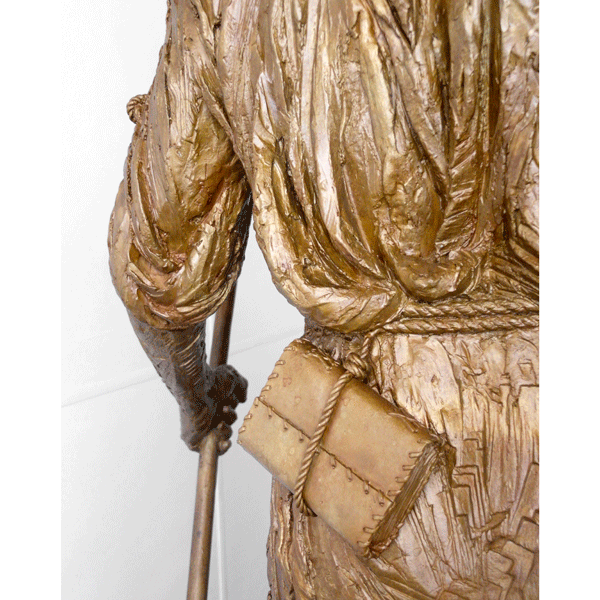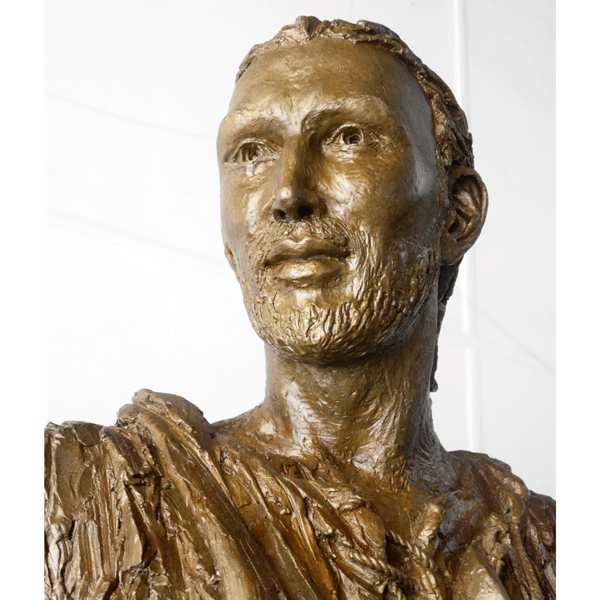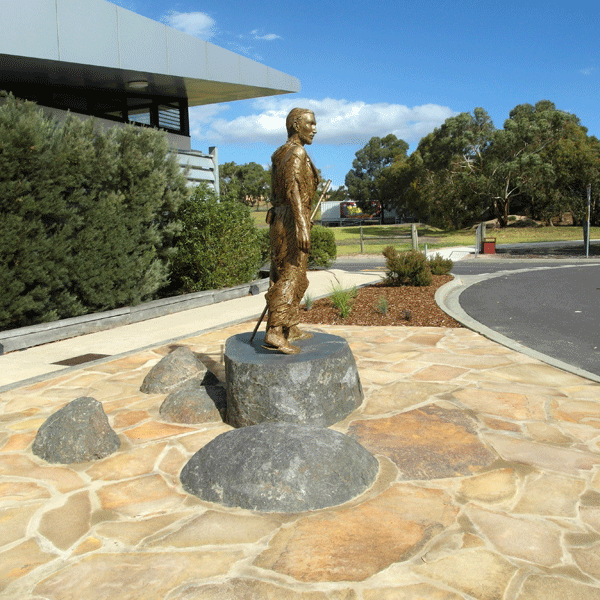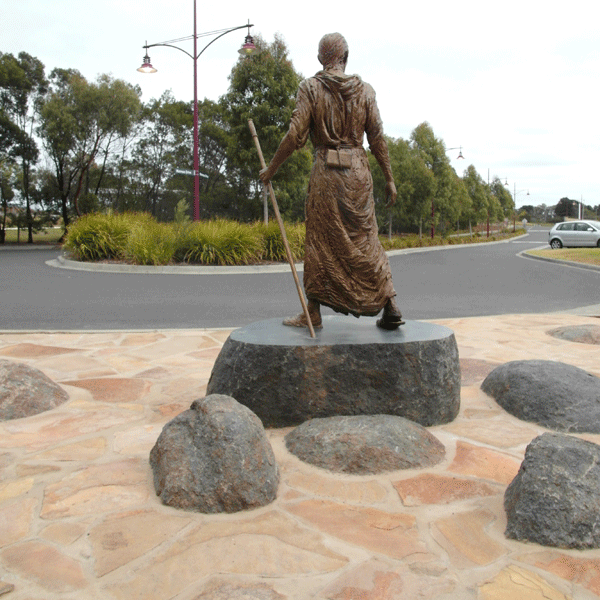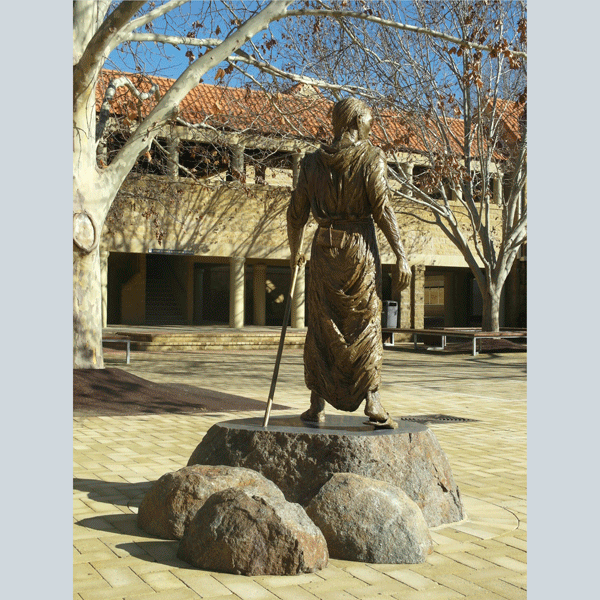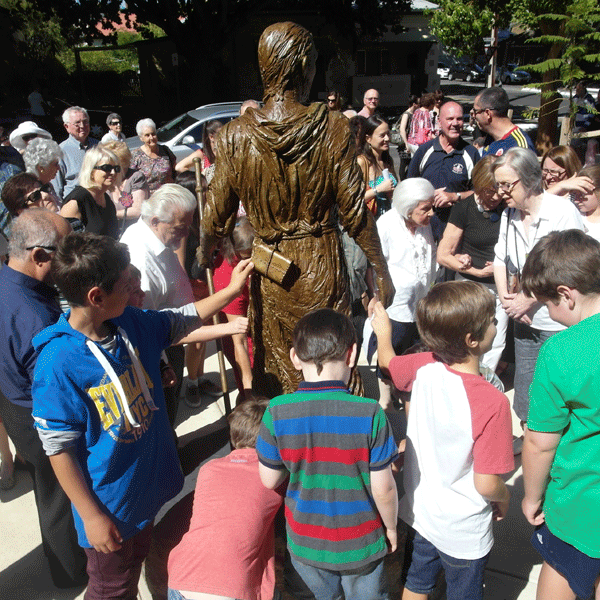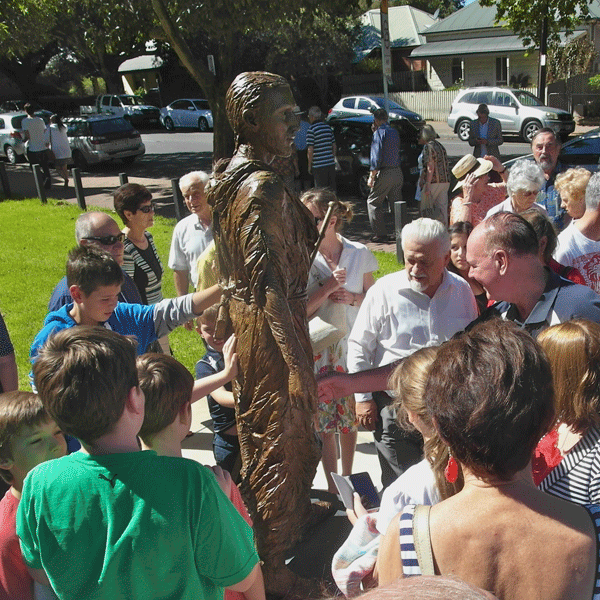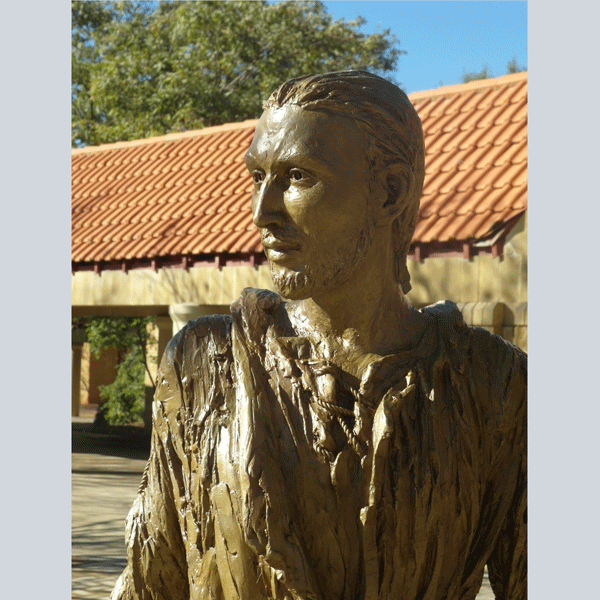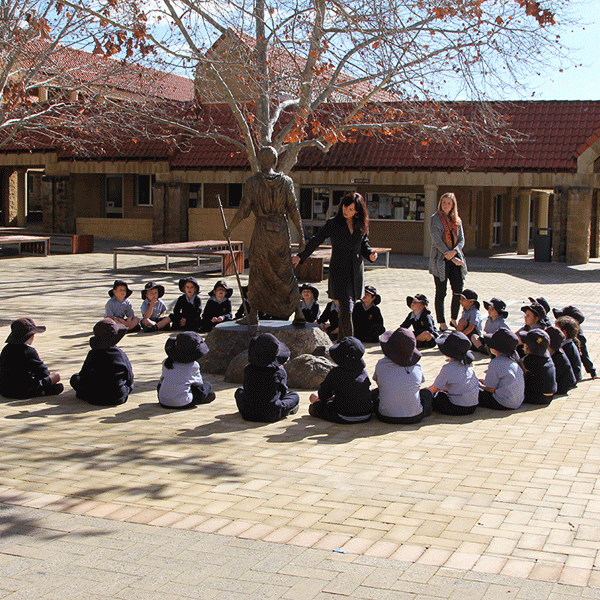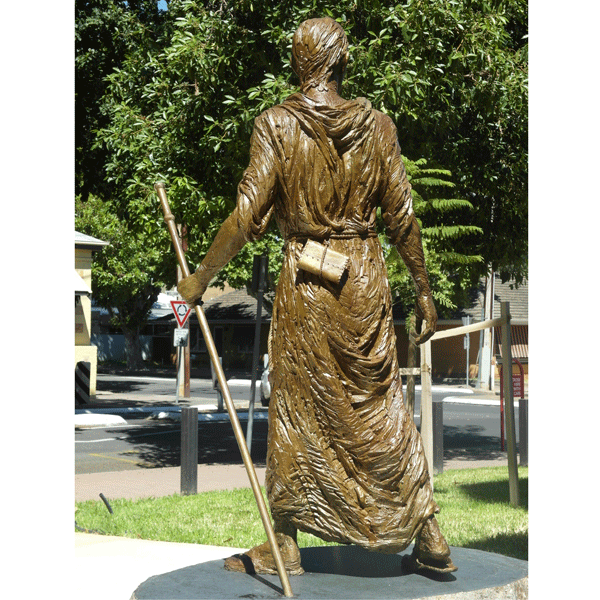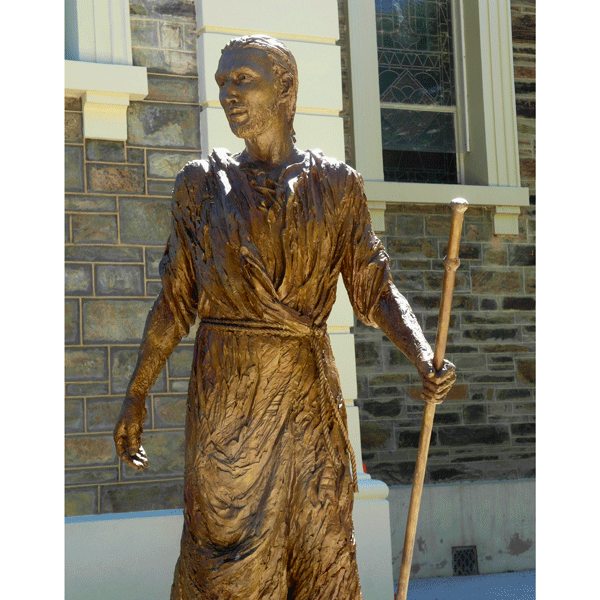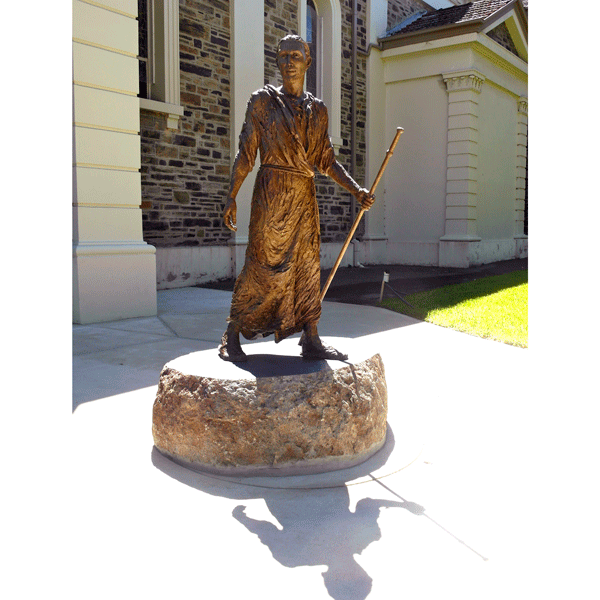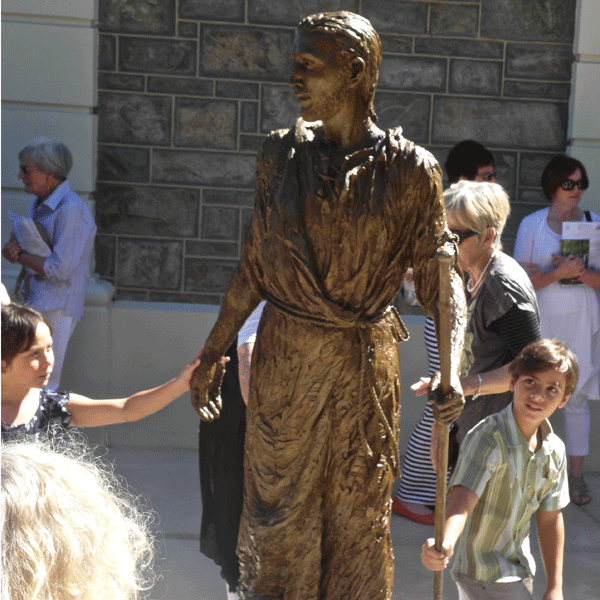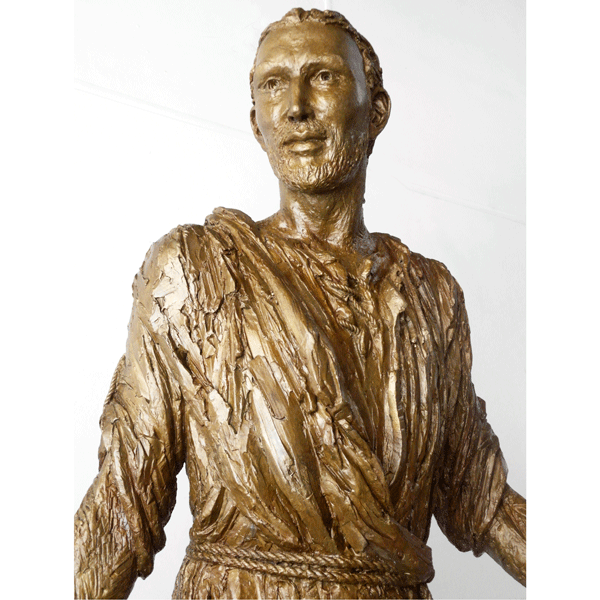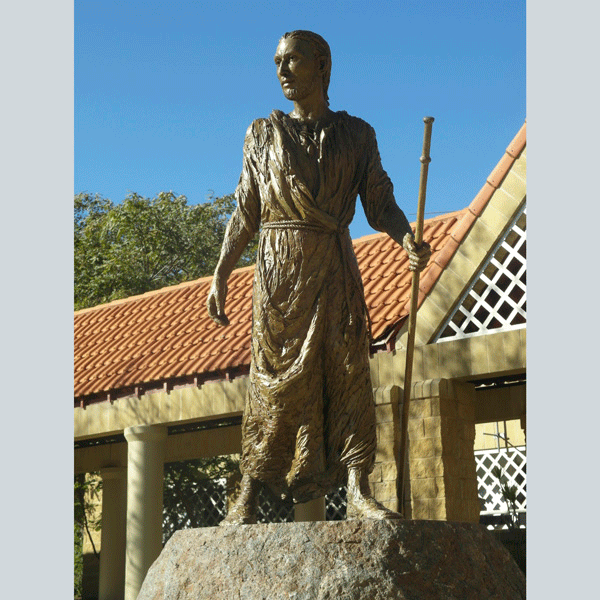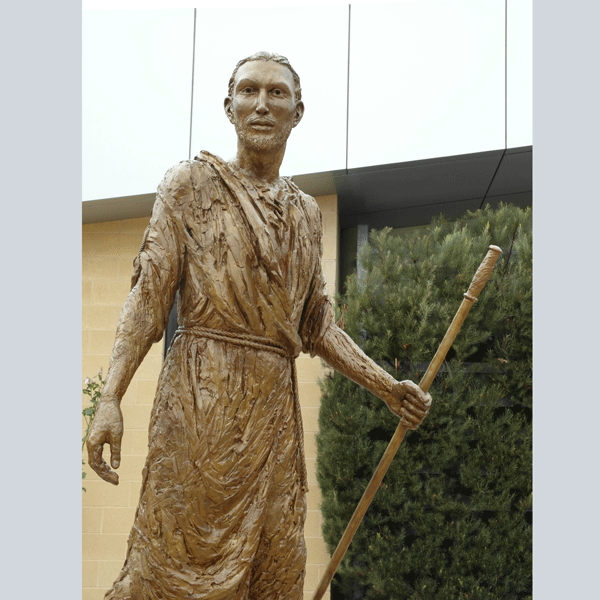ST IGNATIUS
#1/8 Saint Ignatius Parish, Norwood, SA
#2/8 John xxiii College, Claremont, WA
#3/8 Saint Ignatius College, Geelong, Vic
“In the church at Montserrat, Ignatius spends a night in vigil at the altar of the Virgin, and hangs up the arms of human warfare with the votive offerings there.”
Contained in this simple action of giving up his sword and sheild is the moment Ignatius changed his own destiny and, by association, the destiny of millions of others.
From this pivotal point all other Ignatius stories radiate. The moment when a man trained for warfare casts away his weapons, denies himself the satisfaction of casual violence, chooses not to inflict injury, to wound, to violate, to chase down a man and kill him for an insult. It is here Ignatius relinquishes the society he was bred to, and chooses to journey alone and vulnerable, an individual seeking the word of God, stepping into an unknown future.
For me a sculpture has to carry more than a simple set of historic references, it must be more than a dress dummy in historic clothing. To spend 18 months on a single sculpture, I need to work with a strong sense of relevance. The message of non-violence is one that has profound implications for our times. We are faced with a generation of young men and women who have grown up with violence as entertainment. Death and carnage, casual brutality is the norm. Well protected in our middle class lives, well fed and experiencing a minimum of physical pain or discomfort in the security of our lounge rooms, children witness 16,000 simulated murders and 200,000 acts of violence by the age of 18.1 Do we remember the words of Ignatius ; “Give me a child until he is seven and I will show you the man”?
The sculpture is a single, intense image, the figure of a man. Glimpsed from a distance we see him walking, turning to look back as he steps forward. The message of nonviolence is implicit rather than explicit here, because how do you express a “non” value in a visual image with no props and no background? Come closer and you see the body of a fighter, the clenched fist, the well-muscled arms, shoulders thrown back, every fibre ready for action. Yet, in contrast, the open hand grasps no sword. The twist of the figure is important. I wanted to think about how Ignatius listened for the word of God, a listening that involved his whole being. Again how to express an intangible sense like “listening” in a visual form. In this sculpture,we see him turning, mid-stride, as if he has heard a voice call his name.
The sculpture is placed at the point of time when Ignatius continues on his journey, after visiting the Monastery in Montserrat. He has a tentative, optimistic plan to go to the Holy Land, a plan that changes as he goes. He has not yet found himself immobilised, starving, praying and writing in the cave at Manresa, while all the grief and trauma of his war years washes out of him. The broken body and soul healing.
Here we see him with his body is still healthy, though injured, his hair and beard still tidy, though later he let it grow rough and wild. He limps through the steep and craggy, rocky landscape with the aid of a staff. Bare feet only just covered with simple slippers.
A biography of his contemporary, Leonardo DaVinci speaks about Leonardo’s working habits. “When he found what fitted his purpose he noted it in a little book, which he was always carrying in his belt”2 It seemed appropriate to the era therefore, to include a small blank book, tied to Ignatius’ rope-belt, a symbol of the Spiritual Exercises yet to be written.
Ignatius is wearing the robes of a beggar. I gave much thought to the robes. I wanted it to be apparent that Ignatius is wearing another man’s clothes. Too big for him, the robe hangs off his small frame, the sleeves tied up with knotted ropes. The fabric is hitched up around his waist, draping over the rope belt, falling in thick folds.
Think about the beggar’s robe: Old and ragged is assumed, but it is more than that. The smell of the body of the beggar is imbued into its fibres, the shape of his body in its folds. It has been the man’s only garment, his blanket for sleeping, shelter from rain, shade from the sun, a handkerchief, a towel. Stained with blood, sweat, mud, faeces, washed in the clay water of rivers, faded and rotted by the sun. The robe wraps around Ignatius in an unstructured geometry. Hand modelled robes are the key to an energetic, powerfully descriptive sculpture. I sculpted it with broad strokes, the modeling so rough and loose that it hardly held together in the clay.
The figure underneath the robe has been hand modelled in its entirety. In the tradition of the old masters I always sculpt the figure first, naked, working in solid clay over an armature; with a life model as inspiration. The sculpted body gives authenticity and veracity to the finished work. The carefully observed volume and form of a real human body gives the entire structure an unmistakable visual energy even when the body is almost entirely covered with clothing. Even the choice of life model was critical for Ignatius: A swordsman would be well muscled but lithe, without the heavy trapezius muscles of a footballer or a weight lifter. He would have an active flexible physique despite his injuries. We chose a life model whose sport is surfing, the structured musculature and posture better matching that of a swordsman.
Ignatius was a war veteran. As I sculpted his face I was remembering the faces of the Vietnam veterans - young men when I was in my early teens, beautiful young men with haunted eyes and battle scarred minds, heavy drinkers. They had seen too much, having been immersed in so much violence. They did not fit easily with ordinary society, the peaceful ways of our quiet city. They were raging, angry, smouldering, self destructive men, yet still so very young.
I wanted the face of Ignatius to capture some of those stark contrasts; young, yet haunted with a knowledge beyond his years, compassion and determination blend, worry and fearlessness side by side, empathy along with a soldiers ferocity.
To sculpt the face I worked initially from a small bronze bust, itself a copy from the death mask of St Ignatius that is held in Rome. From the bust I was able to sculpt a precise profile and outline of the head and face. The long aquiline Spanish nose, strong cheekbones and well defined forehead. Bringing the face to life was an interesting challenge. I usually work faces directly from life models, capturing as much as possible the vividness and individuality of a real person. Late in project I found a young man with the same deep set eyes and strong forehead. He came to the studio for several long modelling sessions which focussed completely on the upper portion of the face.
The profundity and breadth of St Ignatius’ legacy, and the strength of the Institute he engendered, leads us to think habitually of him as complete, as the mature thinker, the man of action, the directed and self assured adult. Conversely the sculpture contemplates Ignatius as a young man, as potential still coming into being.
We see him at the start of the journey, still not knowing where his feet will take him, wrong turns and missed directions still ahead. As yet unrealised are the achievements of maturity, the formation, the clarity and the power of the man he evolved into. This is a time before his friends became followers, before his direction was clear. This is the moment when he has taken those first (painful and broken) steps in the direction of his (still unknown) destiny.
The very first of the edition of eight bronzes was unveiled in Norwood Parish, S.A., just two weeks before the Conclave elected Pope, Francis. There was a lovely synchronicity for me in the choice of the first Jesuit Pope, when our Ignatius had just stepped forth to meet the world. The second of the edition was installed in John XXIII College where he shares the grounds with Mary Ward. Both inspired thinkers becoming symbolic spiritual leaders for the next generation. The third of the edition was unveiled at St Ignatius College, Geelong in March 2015.
![]() More information on St Ignatius and on the making of the sculpture
More information on St Ignatius and on the making of the sculpture
